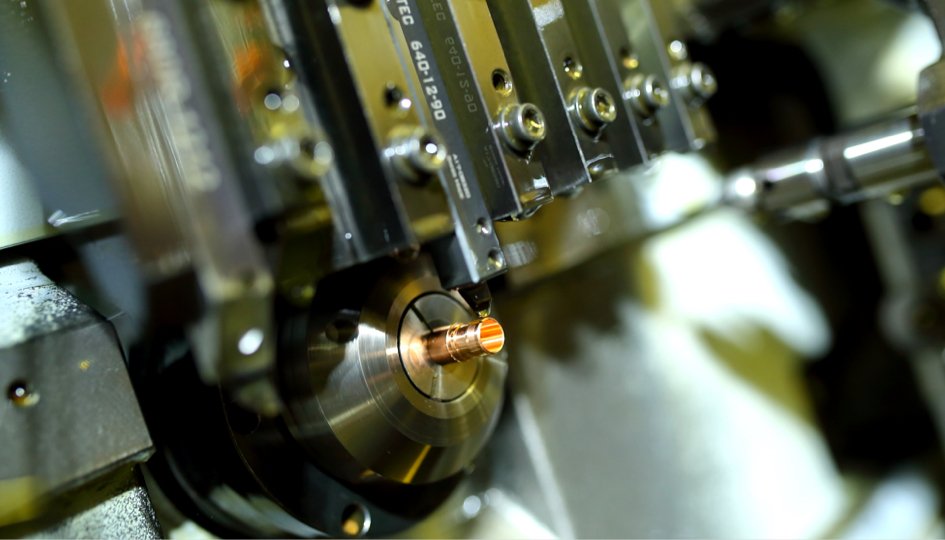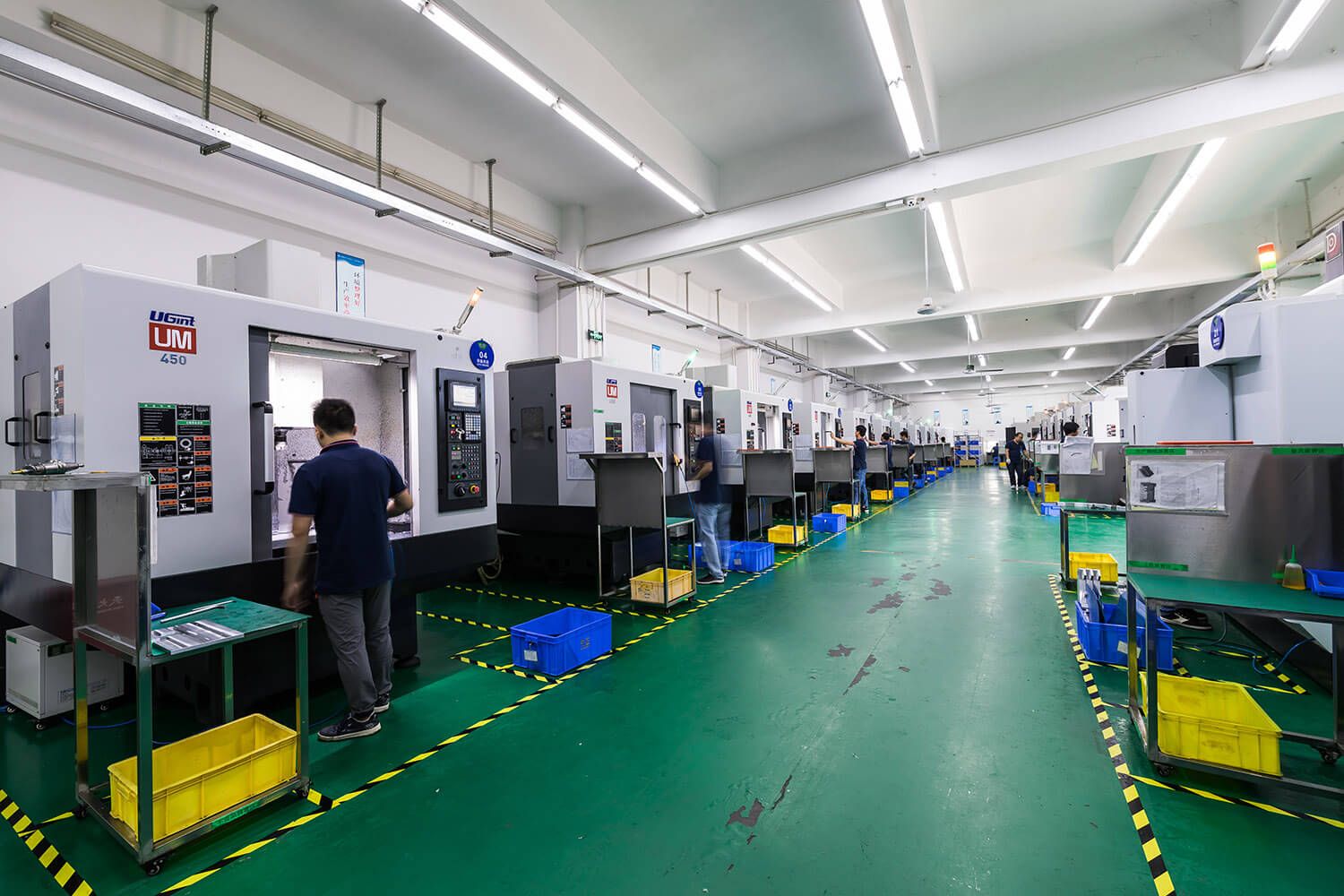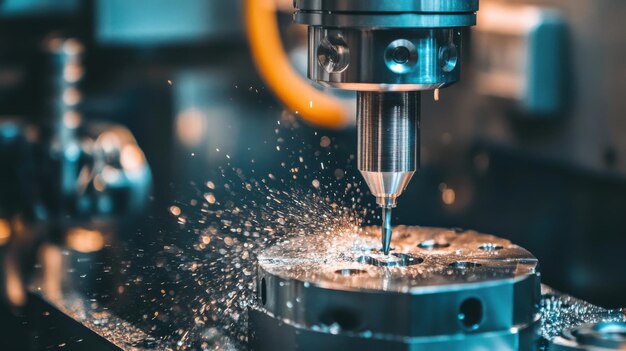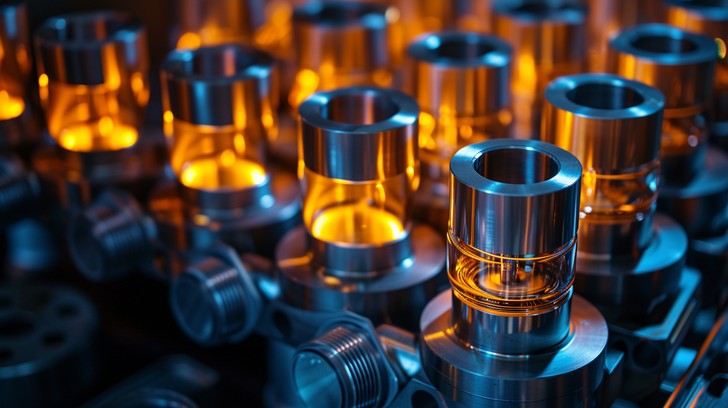In today’s rapidly evolving industrial landscape, the significance of CNC machining cannot be overstated. From aerospace engineering to medical device manufacturing, CNC machining plays a pivotal role in shaping the modern world. Understanding the fundamentals of CNC machining is not merely an academic pursuit; it is an essential aspect of staying competitive and innovative in various industries.
CNC machining, short for Computer Numerical Control machining, represents a fusion of cutting-edge technology and traditional craftsmanship. It embodies the marriage of precision engineering with computerized automation, offering unparalleled accuracy, efficiency, and versatility in the manufacturing process. As industries continue to push the boundaries of what\’s possible, CNC machining emerges as a cornerstone technology driving progress and innovation.
In this article, we delve into the intricacies of CNC machining, exploring its definition, processes, applications, and significance in contemporary manufacturing. By unraveling the mysteries behind CNC machining, we aim to provide insight into its transformative power and why it demands our attention in today\’s industrial landscape. Join us on this journey to uncover the essence of CNC machining and its profound impact on the world of manufacturing.

Process of CNC Machining
Creation of CAD Model
Purpose of CAD Software
CAD (Computer-Aided Design) software serves as the foundation for the CNC machining process. Its primary purpose is to facilitate the creation of detailed and precise digital models of the desired parts or components. CAD software allows engineers and designers to visualize their ideas, iterate designs, and make necessary modifications before proceeding to manufacturing. By providing tools for drafting, modeling, and simulation, CAD software streamlines the design process and ensures accuracy in the final product.
Creation of 2D or 3D Models
Within CAD software, engineers can create both 2D and 3D models of the intended components. These models serve as virtual prototypes, representing the geometry, dimensions, and features of the final part. Whether it\’s a simple 2D sketch or a complex 3D model, CAD software enables designers to capture every detail of the component accurately. This digital representation serves as the blueprint for the subsequent stages of the CNC machining process.
Conversion to CNC File
G Code Format
Once the CAD model is finalized, it needs to be translated into a format that CNC machines can understand and execute. This format is typically G code, a standardized programming language used to control CNC machine tools. G code consists of alphanumeric codes that specify the sequence of machining operations, tool movements, speeds, and feeds required to produce the desired part. The conversion from CAD model to G code involves a process of post-processing, where software interprets the design data and generates the corresponding instructions for the CNC machine.
Role of CAM Software
CAM (Computer-Aided Manufacturing) software plays a crucial role in the conversion of CAD models to CNC files. CAM software takes the digital design data and generates toolpaths and machining instructions based on predefined parameters and machining strategies. It optimizes toolpaths for efficiency, minimizes machining time, and ensures optimal material removal while maintaining accuracy and surface finish. CAM software acts as a bridge between design and manufacturing, translating virtual designs into tangible products ready for CNC machining.
CNC Machine Configuration
Setup Procedures
Before commencing the machining process, the CNC machine must be properly configured and set up for operation. This involves a series of preparatory procedures, including securing the workpiece on the machine bed, loading cutting tools into the tool holders, and calibrating the machine\’s axes. Additionally, machinists may need to input specific parameters and settings into the machine\’s control system to ensure compatibility with the CNC program. Proper setup is essential to achieving accurate and consistent results during machining.
Importance of Proper Configuration
The significance of proper CNC machine configuration cannot be overstated. A well-configured machine ensures that the machining process runs smoothly, minimizing the risk of errors, tool breakage, or dimensional inaccuracies. By aligning the machine components, tooling, and workpiece according to the specified coordinates and orientations, machinists can achieve the desired geometry and surface finish with precision and reliability.
Execution of Machining Operation
Initiating CNC Program
Once the CNC machine is configured and ready, the machinist initiates the CNC program to commence the machining operation. The CNC program contains a sequence of instructions, coded in G code, that dictate the movements and actions of the machine\’s axes and cutting tools. These instructions guide the machine through the various machining operations required to shape the workpiece according to the CAD model. Initiating the CNC program sets the machine in motion, initiating the material removal process.
Continuous Operation Until Completion
With the CNC program running, the machine executes the machining operations continuously until the completion of the part. Throughout the process, the machine tool moves along the programmed toolpaths, removing material from the workpiece with precision and repeatability. Machinists monitor the operation, ensuring that the machine operates within specified parameters and making adjustments as necessary to maintain quality and efficiency. Once the machining operation is complete, the finished part is removed from the machine for inspection and further processing if required.
Types of CNC Machining Processes
CNC Milling
CNC milling is a versatile machining process that utilizes rotating cutting tools to remove material from a workpiece. In this process, the workpiece is typically secured to a stationary platform while the cutting tool rotates and moves along multiple axes to create precise cuts and shapes. CNC milling machines can perform a wide range of operations, including face milling, peripheral milling, pocket milling, and contour milling. These machines are capable of producing complex geometries, intricate features, and smooth surface finishes on various materials such as metals, plastics, and composites.
CNC Drilling
CNC drilling is a straightforward machining process used to create holes in a workpiece. Unlike milling, where the cutting tool moves along multiple axes, CNC drilling involves the stationary workpiece and a rotating drill bit that penetrates the material to form holes of desired sizes and depths. CNC drilling machines can produce holes with high accuracy and repeatability, making them suitable for applications requiring precise hole placement, such as assembly operations, fastener installation, and component mating.
CNC Grinding
CNC grinding is a precision machining process used to achieve tight tolerances and fine surface finishes on workpieces. In this process, a rotating abrasive wheel removes material from the workpiece surface to create the desired shape, dimension, or surface texture. CNC grinding machines come in various configurations, including surface grinders, cylindrical grinders, and centerless grinders, each tailored to specific machining requirements. These machines are commonly used in industries such as aerospace, automotive, and medical device manufacturing, where tight tolerances and high-quality surface finishes are critical.
CNC Routing
CNC routing is a machining process similar to milling, but with a focus on cutting flat or curved profiles from sheet materials such as wood, plastic, and foam. In CNC routing, the workpiece is typically held stationary while a cutting tool mounted on a spindle moves along programmed paths to remove material and create intricate shapes or patterns. CNC routers are widely used in woodworking, signage, furniture manufacturing, and prototyping applications due to their ability to produce intricate designs with high precision and repeatability. These machines offer versatility and efficiency in shaping various materials, making them indispensable tools in many industries.
CNC Turning
CNC turning is a machining process that utilizes lathes to create cylindrical components with tight tolerances. This process is highly essential across various industries, including automotive, electronics, and aerospace, where even the slightest deviation can result in product failure.
Advantages of CNC Machining Over Traditional Methods
CNC machining offers a multitude of advantages over traditional machining methods, revolutionizing the manufacturing industry with its precision, efficiency, and versatility. Here are the key advantages:
Production Speed
CNC machining significantly enhances production speed compared to traditional methods. With automated processes and optimized toolpaths, CNC machines can perform machining operations at high speeds without sacrificing accuracy or quality. This increased production speed enables manufacturers to meet tight deadlines and fulfill large volume orders in a timely manner, improving overall productivity and competitiveness.
Cost Efficiency
CNC machining offers cost efficiency by reducing labor costs, material waste, and production downtime. By automating machining processes, CNC machines eliminate the need for manual labor and supervision, minimizing labor expenses and improving resource utilization. Additionally, CNC machines optimize material usage by precisely removing only the necessary material, reducing waste and material costs. Over time, these cost-saving benefits translate into higher profitability for manufacturers.
Consistency
One of the standout advantages of CNC machining is its ability to deliver consistent and uniform results across multiple production runs. Unlike traditional methods that are susceptible to human error and variability, CNC machines execute machining operations with precision and repeatability, ensuring consistent part quality and dimensional accuracy. This consistency is critical for industries such as aerospace, automotive, and medical device manufacturing, where strict quality standards must be met.
Accuracy
CNC machining excels in delivering exceptional accuracy and tight tolerances, surpassing the capabilities of traditional machining methods. With advanced control systems and high-precision tooling, CNC machines can achieve micron-level accuracy in machining operations, meeting the most demanding design specifications and engineering requirements. This level of accuracy is essential for industries where precision is paramount, such as aerospace, defense, and electronics manufacturing.
Versatility
CNC machining offers unparalleled versatility, allowing for the production of a wide range of parts and components across various industries and applications. From simple geometries to complex contours and intricate designs, CNC machines can handle diverse machining tasks with ease. Furthermore, CNC machines can work with a wide variety of materials, including metals, plastics, composites, and ceramics, expanding their applicability and versatility in manufacturing processes.
Lower Rejections
The precision and consistency of CNC machining result in significantly lower rejection rates compared to traditional methods. By eliminating human error and variability, CNC machines produce parts with minimal defects or deviations from specifications, reducing the likelihood of rejected or scrapped parts. This reduction in rework and waste not only saves time and resources but also improves overall efficiency and product quality.
Data Tracking
CNC machining facilitates data tracking and process monitoring through digital control systems and software integration. Manufacturers can collect real-time data on machining parameters, tool performance, and production metrics, enabling them to analyze and optimize manufacturing processes for greater efficiency and quality control. Data tracking also provides valuable insights into machine utilization, maintenance requirements, and predictive analytics, empowering manufacturers to make informed decisions and continuous improvements.
Choosing the Right CNC Machining Manufacturer
Selecting the right CNC machining manufacturer is a critical decision that can significantly impact the success of your project. Here are some key considerations to keep in mind when choosing a CNC machining manufacturer:
Considerations for Selection
Quality Standards: Look for a manufacturer that adheres to stringent quality standards and certifications, such as ISO 9001 or AS9100. Quality assurance processes ensure consistency, reliability, and traceability throughout the manufacturing process.
- Capabilities and Equipment: Assess the manufacturer\’s capabilities and equipment to ensure they have the expertise and resources to handle your specific machining requirements. Consider factors such as machine size, axis configurations, tooling capabilities, and material expertise.
- Industry Experience: Choose a manufacturer with experience in your industry or niche market. Industry-specific knowledge and expertise can ensure that the manufacturer understands your unique requirements, regulations, and quality standards.
- Prototyping and Design Support: Look for a manufacturer that offers prototyping and design support services to help you refine your product designs, optimize manufacturability, and reduce time to market.
Communication and Collaboration: Evaluate the manufacturer\’s communication channels and responsiveness. A reliable manufacturer should be accessible, responsive, and willing to collaborate closely with you throughout the manufacturing process. - Cost and Pricing: Consider the manufacturer\’s pricing structure, including factors such as material costs, machining rates, setup fees, and volume discounts. Balance cost considerations with the quality and value offered by the manufacturer.
- Lead Times and Turnaround: Assess the manufacturer\’s lead times and turnaround times to ensure they can meet your project deadlines and delivery requirements. Look for manufacturers with efficient production processes and quick turnaround times without compromising quality.
Customer Reviews and References: Research customer reviews, testimonials, and case studies to gauge the manufacturer\’s reputation, track record, and customer satisfaction levels. Seek references from past clients to validate the manufacturer\’s performance and reliability.
Importance of Experience and Capabilities
- Technical Expertise: Experienced CNC machining manufacturers possess in-depth technical knowledge, skills, and expertise in machining processes, materials, and technologies. They can offer valuable insights, recommendations, and solutions to optimize your designs for manufacturing and ensure superior part quality.
- Problem-Solving Abilities: Experienced manufacturers have encountered a wide range of machining challenges and issues over the years. They have honed their problem-solving abilities and troubleshooting skills, allowing them to overcome obstacles and deliver successful outcomes even in complex machining projects.
- Process Optimization: Experienced manufacturers leverage their knowledge and experience to optimize machining processes, minimize cycle times, and maximize efficiency. They continuously refine their processes, adopt best practices, and invest in technology upgrades to deliver superior results and cost-effective solutions.
- Risk Mitigation: Choosing an experienced CNC machining manufacturer reduces the risk of project delays, errors, and quality issues. Experienced manufacturers have robust quality control systems, risk mitigation strategies, and contingency plans in place to ensure project success and mitigate potential risks.
- Long-Term Partnership: Partnering with an experienced CNC machining manufacturer fosters a long-term relationship based on trust, reliability, and mutual collaboration. Experienced manufacturers are committed to customer satisfaction, innovation, and continuous improvement, making them valuable partners for your ongoing machining needs.
TDB Machining Vietnam: Your Trusted Partner for CNC Machining Solutions
At TDB Machining Vietnam, we pride ourselves on being a trusted provider of CNC machining solutions, offering a comprehensive range of machining services to meet your diverse needs. Since our establishment in 2015, TDB Hanoi Co., Ltd. has emerged as a leading multi-axis CNC machining manufacturer in Vietnam, committed to upholding strict quality standards and exceeding customer expectations.
We are proud to announce that our operations adhere to the rigorous requirements of ISO 9001:2015, a globally recognized standard for quality management systems. This certification underscores our commitment to delivering superior quality products and services while continuously improving our processes to meet the evolving needs of our customers.
With a state-of-the-art facility equipped with over 50 CNC machines and an extensive inventory of more than 100 metal materials, we have the capabilities to deliver high-quality parts with precision and efficiency. Whether you require prototype development or OEM parts manufacturing, our team of experts leverages our expertise in CNC Machining, Swiss Precision Machining, Finishing, and Assembly to meet your requirements with the utmost precision and reliability.
Our mission at TDB Machining Vietnam is clear: to be globally recognized for our technical excellence and total value solutions. We are dedicated to surpassing the expectations of our customers, employees, and the community while fostering a culture of zero complaints. With a commitment to utilizing leading-edge technologies, we strive to offer globally competitive solutions that deliver exceptional value to our clients.
Furthermore, we prioritize the well-being and professional development of our employees, providing them with opportunities for skills enhancement, career advancement, job security, and competitive benefits. By investing in our workforce, we ensure that our team remains equipped with the expertise and capabilities necessary to deliver superior machining solutions that meet the evolving needs of our clients.
At TDB Machining Vietnam, we are more than just a machining company – we are your strategic partner for success. Trust us to deliver precision, reliability, and excellence in every project we undertake.
Conclusion
CNC machining stands as a cornerstone of modern manufacturing, offering a plethora of benefits and a streamlined process that ensures precision, efficiency, and versatility.
Throughout this exploration, we have highlighted the various advantages of CNC machining, including its ability to enhance production speed, reduce costs, ensure consistency, maintain accuracy, provide versatility, lower rejection rates, and enable data tracking. These benefits make CNC machining indispensable in industries ranging from aerospace and automotive to medical device manufacturing and beyond.
Moreover, we have delved into the intricacies of the CNC machining process, from the creation of CAD models and conversion to CNC files to machine configuration and the execution of machining operations. Each step in the process is crucial to achieving the desired outcome and underscores the sophistication and precision inherent in CNC machining technology.
Lastly, we have emphasized the importance of understanding and selecting a reputable manufacturer for CNC machining projects. A reputable manufacturer with experience, capabilities, and adherence to quality standards such as ISO 9001:2015 can ensure the success and reliability of your project. By partnering with a trusted manufacturer like TDB Machining Vietnam, you can leverage their expertise, resources, and commitment to quality to bring your vision to life with confidence.



